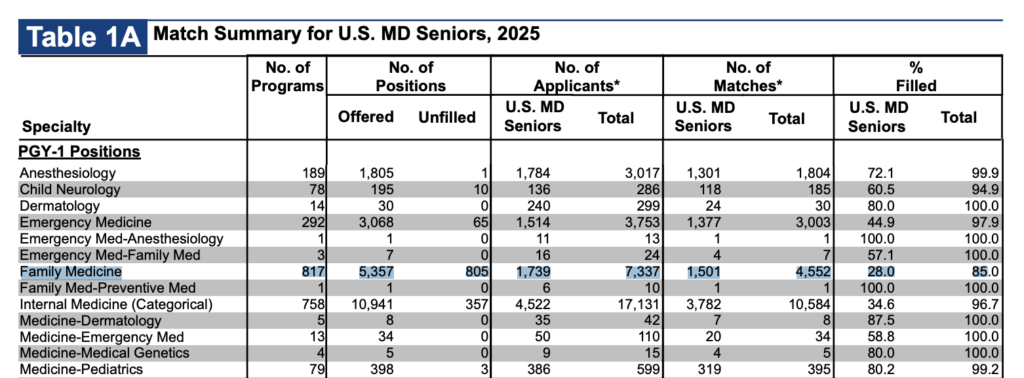When I was a fellow, my key metric when choosing my job was variety, not so much in terms of pathology or the pictures themselves but in the day-to-day. Variety helps me do one overarching critical thing for my professional satisfaction: optimize for enthusiasm.
There are a lot of things I like about radiology and some that I don’t, but one thing that makes everything go down smoother is a nice balance to the week—with different kinds of work on different kinds of days that demand different kinds of things from you.
Academia
I always thought I would be in typical academic practice because I generally like being “involved,” and I like the community. I enjoy teaching and mentorship, and I always have. I’ve been a peer mentor of one variety or another since high school. It’s just something that I find meaningful. I don’t didn’t even mind committee work and other kinds of bureaucracy, even if how the sausage gets made is off-putting. (If we’re being honest, I also probably felt I’d stay in academia because of comfort with the only system I’d ever known, willingness to buy into the lie that the best work gets done there, and a general failure of imagination.)
One thing I didn’t like was the rigid hierarchy, the prevailing pay-your-dues to get a better job attitude, the unfair treatment and distribution of different kinds of work among different kinds of people, especially when such treatment is a preference for seniority or clout that is sometimes unearned and often counterproductive for actual department functioning.
Another was that I don’t particularly enjoy the research game, which is the only meaningful academic currency in many departments, even when most research we do as a field—and certainly all the research I’ve done—has been trash. Someone should do it, but it doesn’t need to be me.
A bit of research here and there is fine, but a job with a “clinician educator” focus (and where that is valued) is what spoke to me.
Academia providing less vacation and money, while often true, wasn’t actually that much of a consideration at the time.
Physician-Ownership & Governance
As those who have read the relevant posts on this site, I wanted nothing to do with private equity when I found my first job. Thankfully, that wasn’t an issue in Dallas. I don’t regret that outlook, and my peers who joined PE or joined practices that sold to PE have all left without exception.
With regards to university or hospital employment, it doesn’t take much exposure to the layers of management or dubiously useful hierarchy to find a representative democracy with physicians in control to be refreshing. Obviously, the hospital is still the hospital and is dysfunctional in all the ways large organizations so often are, but a true private practice is one-step insulated and removed, able to advocate for ourselves and control our own workflows.
Speaking to hierarchy, I liked that new associates could be involved in everything and do anything in the group except serve on the board of directors. I was an associate program director for the residency before I was a partner.
A Truly Hybrid Schedule
My schedule is a combination of teaching at the hospital, working from home, and sometimes working solo at an imaging center in a strip mall somewhere.
Ultimately, I’m a better teacher when teaching is part of my job that I get to look forward to and not something I do every single day. Trust me, even I sometimes get tired of hearing myself speak and saying the same things over and over again.
I also like the fact that I get to spend some of my days working with residents and students, and some of my days working by myself—reading my own cases at my own pace, sometimes doing my own procedures and talking (briefly) to my own patients.
(I did just take over the program director role this month, and that also means regular admin time as well.)
Having a hybrid schedule was especially important for me, because while I have no interest in being a teleradiologist, I very much have an interest in working from home on at least a weekly basis (I’m about 50% remote).
My wife has her own solo psychiatry practice and makes her own schedule. So as the parents of two young children, the ability to have lunch together or take a walk around the neighborhood during the week is an incredible boon to our marriage. We’ve had more mini dates and spent more quality time together during the day than we could ever hope to carve out from our busy evenings with the family or over-scheduled weekends.
Some flexibility is seriously valuable.
A Four-Day Workweek
I also really appreciated my group’s goal of a four-day workweek. I didn’t really need an academic day—which can get filled by meetings and duties and other administrative tasks—what I really wanted was a day off to pursue my hobbies/interests, to be a good partner and parent, take my kids to school, pick them up, make sure the house is in order, and yes, recharge my battery at least just a little.
Some groups have lots of week-long vacation blocks because it is by far the easiest way to do scheduling, but the reality is that I don’t need week-long blocks in huge numbers. In my current life, I’m not going on lots of trips when my kids are in school. I also don’t need large blocks of time off because I’m not diligent enough in my time management to take advantage of them for creative pursuits—I need regular time off.
So a four-day workweek combined with healthy vacation is a great mix. When you combine my eight weeks of PTO and my four-day workweek, you end up with the equivalent of like 17 weeks off, which is, of course, phenomenal.
From a partnership perspective, this is also a strong way to handle staffing in that the fifth day off is not a guarantee depending on who’s on vacation and how the lists are, but it allows for our division to be flexible accomodating shifting workloads, scheduling PTO even one day at a time, and staffing/recruiting.
This is to say, I don’t always get that fifth day off—but I do most of the time. And when I don’t, I just get paid extra for working.
But when people ask how I have time to write, that’s certainly part of the answer.
//
My situation is, of course, mine. My wife became an attending when I was a senior resident, and we’d already returned to be near our families for residency. We weren’t going anywhere. I wasn’t canvassing the country looking for the most magical of all possible jobs. I was looking for the best job for me in the Dallas area, and I was trying to achieve that combination of work variety, location variety, and schedule flexibility.
There’s nothing wrong with different kinds of radiology practice. Different strokes and all that. But I will admit that when I was a trainee deciding between staying in academics at my home institution and joining a traditional, typical private practice, I couldn’t shake the feeling that I wasn’t excited about either choice/extreme. I feel very fortunate that the chance to do something in the middle was available where I was looking.
(And yes, we’re hiring.)

